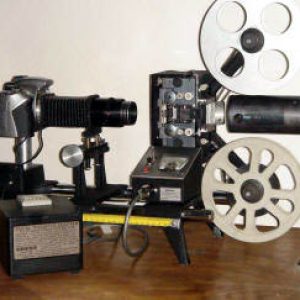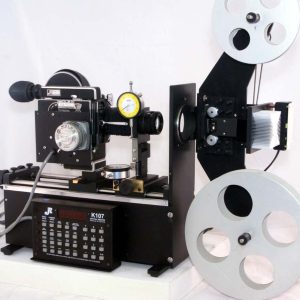Built and sold around the world. So, my mind has evolved around the mechanical skills that can confirm what works and what tools are needed to make the workable components. Therefore, my mechanical experiences are deeply rooted into mechanical aspects of the growing mechanical matter. Hence, it’s not an accident that leads me to observe that the critical scientific statements, concerning how the Milky Way galaxy operates are out of the mechanically working reality. Time have past and JKcamera.com (Meritex Inc), operations are gone with the same passing time, Hence, its no longer the same as it used to be at the time the motion picture production was based on plastic film operations. During those times, I spent many very interesting years modifying motion picture cameras to Super 8 and Super16 formats, among building other dedicated equipments that are made to the custom order. Thus, the JK Optical Printers K103 – K107 are part of my history that trained me to be intensely observable. Because these printers are used round the world by independent filmmakers and by the universities that are teaching the film making technique. Therefore, uniqueness of this JK Optical Printer demonstrates the design that require the unique details, the precision and simplicity in the working components. What happened centuries ago, the film making students who got the word of my skills, approached and asked for optical printer that operates similarly to available optical printers that are operated in the Hollywood studios. What’s more, students’ afford-ability was down to 200 times less than the cost of professionally used printers. So, I had a problem to solve, which may equal in solving the secrets of the Milky Way galaxy. So as my technical expertise fades into history and ends my era in visual mechanics, my life is getting interesting again. Instead of sitting in the rocking chair I‘m directing my energy toward completing my decades old quest for better answers for galaxy and its operating components than the space science can explain. During the JK Camera operations, I found how important are mechanical details, and what these details can explain. Because the mechanical trouble shooting has always been my best when dealing with difficult problems. So, in this book, I take the challenge to figure out what’s happening in the dark side of the universe where the in-visual matter evolves. Because the scientific view stipulates that the primeval matter is extremely small in size and weight. So, only I have to add, the nature is also extremely simple in its operation. Hence, it sets the guide lines to follow how abiotic nature evolves. Therefore, existing matter becomes natural to understand what can happen when primeval matter is the mechanical object but is in-visual and untouchable state. So, I’ve thought about it in the same mechanical manner that guided my various breakthroughs in the camera engineering. Hence, based strictly on mechanical thinking, following I will demonstrate how the Milky Way galaxy evolved through the mechanics that only nature can possess in primeval state. Having support from the benefit of the doubt, I began to compare the scientific atomic theory with resources nature’s possesses, which explain nature’s capability to create. Hence, the results indicate that the complex atomic theory is not within nature’s capacity to build. Therefore, the book I’m composing is based on the simplicity the abiotic matter operates. So, how much nature’s operations are limited and what nature is capable of in creating, is my most desired subject to sort out.
I‘ve been asked in several occasions how did I come up with an idea, which explains how the galaxies grow and operate? The answer is always the same, its about 65 years old story. My name is Jaakko Kurhi a Karelian-born Finn that possesses the life experiences in the complex mechanics. Professionally I’m optical instrument designer and builder. However, my expertise has accumulated during working in 43 companies during my life time, and a each company having the different agenda to operate. Not to count my Meritex Inc. the manufature cal printers K103 to K107 ware built and sold around the world. So, my mind has evolved around the mechanical skills that can confirm what works and what tools are needed to make the workable components. Therefore, my mechanical experiences are deeply rooted into mechanical aspects of the growing mechanical matter. Hence, it’s not an accident that leads me to observe that the critical scientific statements, concerning how the Milky Way galaxy operates are out of the mechanically working reality. Time have past and JKcamera.com (Meritex Inc), operations are gone with the same passing time, Hence, its no longer the same as it used to be at the time the motion picture production was based on plastic film operations. During those times, I spent many very interesting years modifying motion picture cameras to Super 8 and Super16 formats, among building other dedicated equipments that are made to the custom order. Thus, the JK Optical Printers K103 – K107 are part of my history that trained me to be intensely observable. Because these printers are used round the world by independent filmmakers and by the universities that are teaching the film making technique. Therefore, uniqueness of this JK Optical Printer demonstrates the design that require the unique details, the precision and simplicity in the working components. What happened centuries ago, the film making students who got the word of my skills, approached and asked for optical printer that operates similarly to available optical printers that are operated in the Hollywood studios. What’s more, students’ afford-ability was down to 200 times less than the cost of professionally used printers. So, I had a problem to solve, which may equal in solving the secrets of the Milky Way galaxy. So as my technical expertise fades into history and ends my era in visual mechanics, my life is getting interesting again. Instead of sitting in the rocking chair I‘m directing my energy toward completing my decades old quest for better answers for galaxy and its operating components than the space science can explain. During the JK Camera operations, I found how important are mechanical details, and what these details can explain. Because the mechanical trouble shooting has always been my best when dealing with difficult problems. So, in this book, I take the challenge to figure out what’s happening in the dark side of the universe where the in-visual matter evolves. Because the scientific view stipulates that the primeval matter is extremely small in size and weight. So, only I have to add, the nature is also extremely simple in its operation. Hence, it sets the guide lines to follow how abiotic nature evolves. Therefore, existing matter becomes natural to understand what can happen when primeval matter is the mechanical object but is in-visual and untouchable state. So, I’ve thought about it in the same mechanical manner that guided my various breakthroughs in the camera engineering. Hence, based strictly on mechanical thinking, following I will demonstrate how the Milky Way galaxy evolved through the mechanics that only nature can possess in primeval state. Having support from the benefit of the doubt, I began to compare the scientific atomic theory with resources nature’s possesses, which explain nature’s capability to create. Hence, the results indicate that the complex atomic theory is not within nature’s capacity to build. Therefore, the book I’m composing is based on the simplicity the abiotic matter operates. So, how much nature’s operations are limited and what nature is capable of in creating, is my most desired subject to sort out.
Jaakko Kurhi

